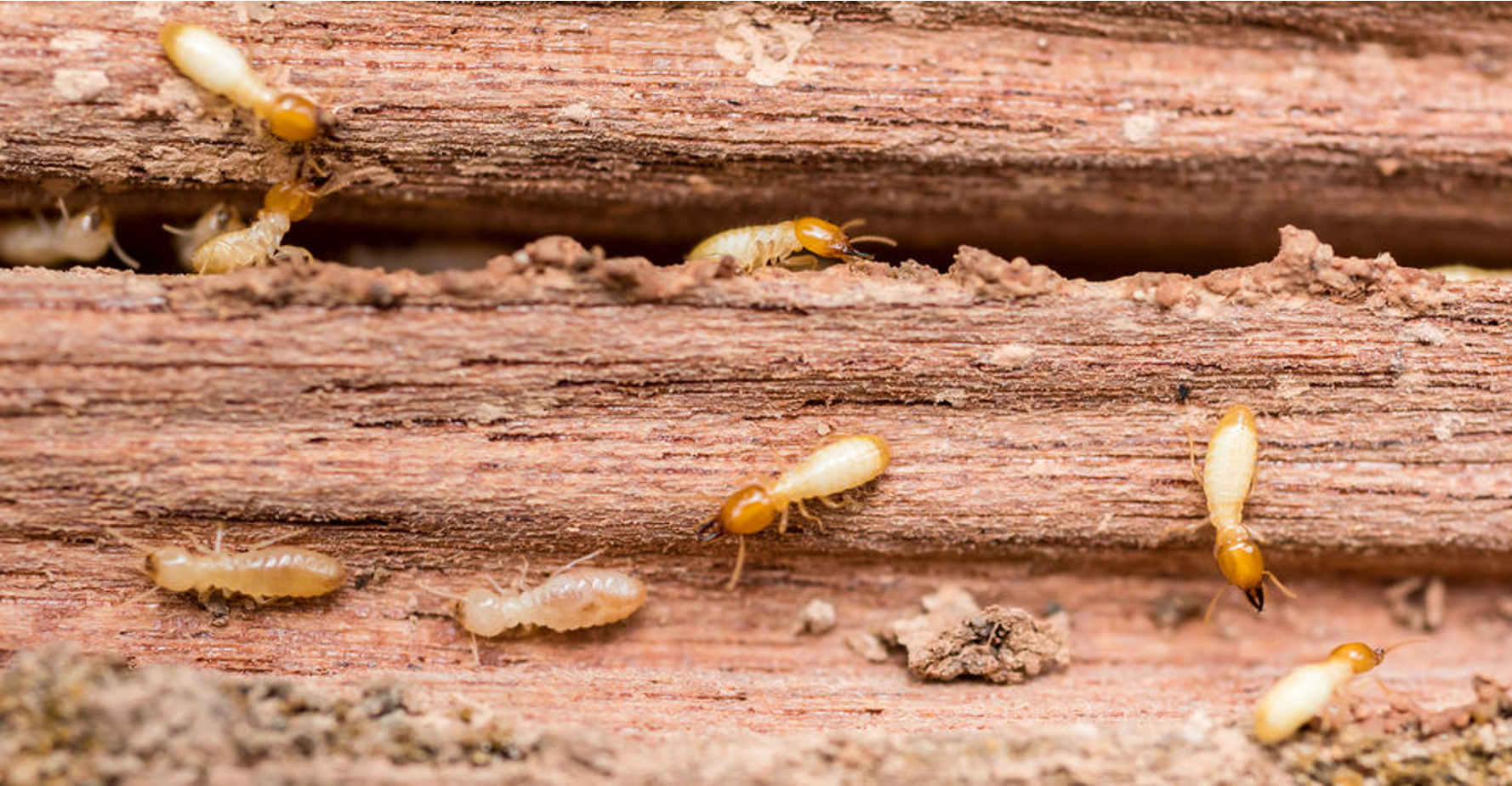Key Takeaways
- Termites can cause serious damage to a home’s structure if they go unnoticed for too long.
- One of the biggest red flags for subterranean termites is the presence of mud tubes along the outside of your house.
- Finding swarmers or discarded wings near windowsills is a strong sign that termites are around.
- In Northern Virginia, Eastern Subterranean termites are the most common type to watch out for.
- Connor’s Pest Pros provides targeted termite treatments, including in-depth inspections, tailored treatment plans, and long-term protection designed specifically for homes in Northern Virginia.
Identification of Termite Infestation in Northern Virginia
Early termite problems can be caught before they blow up to expensive repairs, especially in Northern Virginia, where this is a common pest problem. Alas, these pests are silent invaders that can cause significant damage before they are detected.
But the good news? There are some pretty clear signs that they leave behind. You’ll be able to recognize an infestation before it gets beyond your control if you know what to look for.
|
Connor’s Pest Pros: Family-Owned Pest Control Experts Choose Your Pest Protection Solution:
Customer Praise:
★★★★★ “Quick to answer my call and available same-day… I recommend them to anyone looking for pest control in NOVA.” – Jacquelyn L.
Why Choose Connor’s Pest Pros:
|
Sign 1: Mud Tubes
One of the biggest giveaways of a subterranean termite problem is the presence of mud tubes. These small, tunnel-like structures help termites move between their colony and their food source while keeping them safe from predators and dry air.
If you see thin, dirt-colored tubes about the width of a pencil on your home’s foundation, exterior walls, crawl spaces, or basement, termites are likely nearby. And if you break one open and notice active termites inside, it means they’re already at work chewing through your home.
Sign 2: Visible Damage to Wood Structures
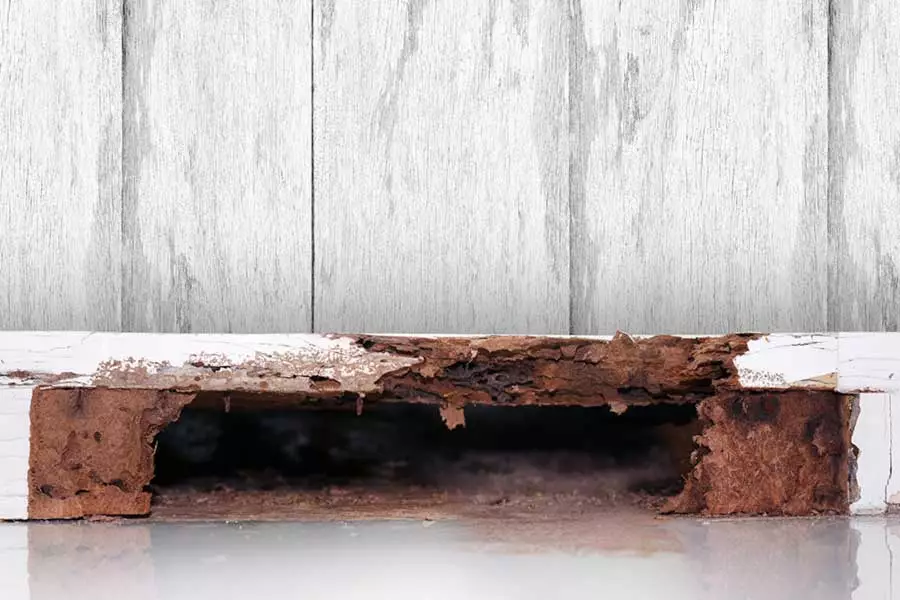
Termites love to feast on cellulose, which is found in wood, and over time, this can lead to serious structural problems. If you tap on a wooden surface and it sounds hollow, or if you notice blistering, buckling, or sagging wood, these could all be signs of an infestation.
The tricky part? Termite damage often hides behind walls and under floors, making it easy to miss until the problem has escalated. That’s why regular inspections are key to catching these pests before they cause too much harm.
Comparison of Termite Damage vs. Water Damage
Termite damage and water damage can look surprisingly similar—both can make wood appear warped, swollen, or even buckled. But there are some key differences that can help you tell them apart. Knowing what to look for can save you from mistaking a termite problem for a simple moisture issue.
| Feature | Termite Damage | Water Damage |
| Texture | Hollow sound, tunnels visible | Soft, spongy texture |
| Appearance | Blistered, uneven surface | Discoloration, peeling paint |
| Smell | Generally odorless | Musty odor |
Sign 3: Presence of Swarmers or Discarded Wings
If you’re spotting tiny discarded wings near your window sills or noticing swarmers flying around your home, it’s a red flag. These winged termites are on a mission to start new colonies, and if they’re inside, your home could already be on their radar.
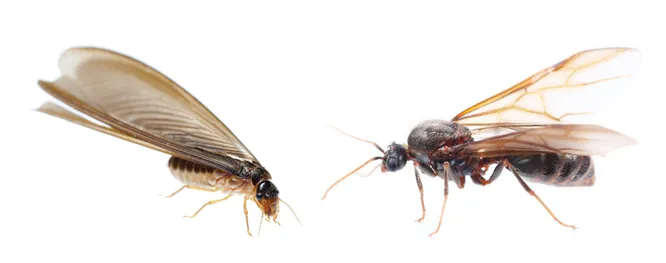
It’s easy to mistake termites (left) for flying ants (right), but they have some key differences. Termites’ antennae are straight, their waists are thick, and their wings are all the same size. Ants, on the other hand, have bent antennae, pinched waists, and uneven wings.
If what you’re seeing fits the termite profile, they’re likely already settling in.
Catching this early can save you from major headaches—and expensive repairs. If swarmers or their wings are showing up in your home, it’s time to act fast.
The Most Common Termites in Northern Virginia
1. Eastern Subterranean Termites
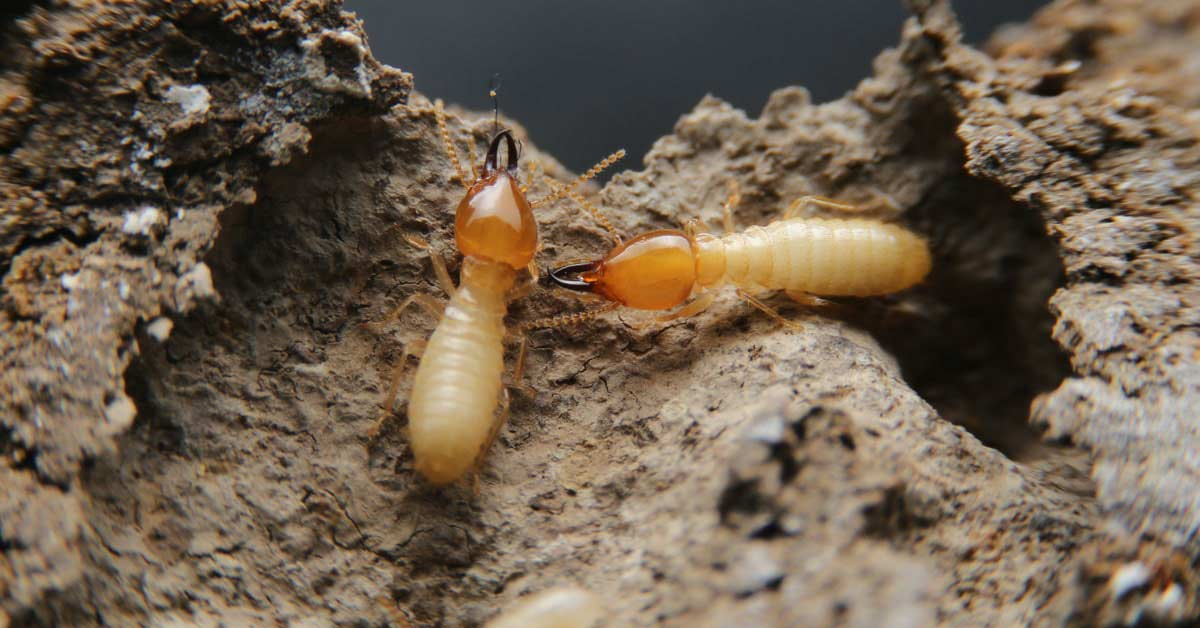
Subterranean termites, especially Reticulitermes flavipes, are the most destructive termites in the U.S., showing up just about everywhere except Alaska.
These pests work silently but aggressively, causing over $7 billion in damage each year as they chew through homes from the inside out—often before anyone realizes there’s a problem.
- Appearance: Cream-colored workers, soldiers with large heads, and dark-winged swarmers.
- Behavior: Build mud tubes for protection and thrive in moist environments. Colonies are large and destructive, often causing significant structural damage.
- Habitat: Nest underground with direct access to soil and wood.
2. Formosan Termites
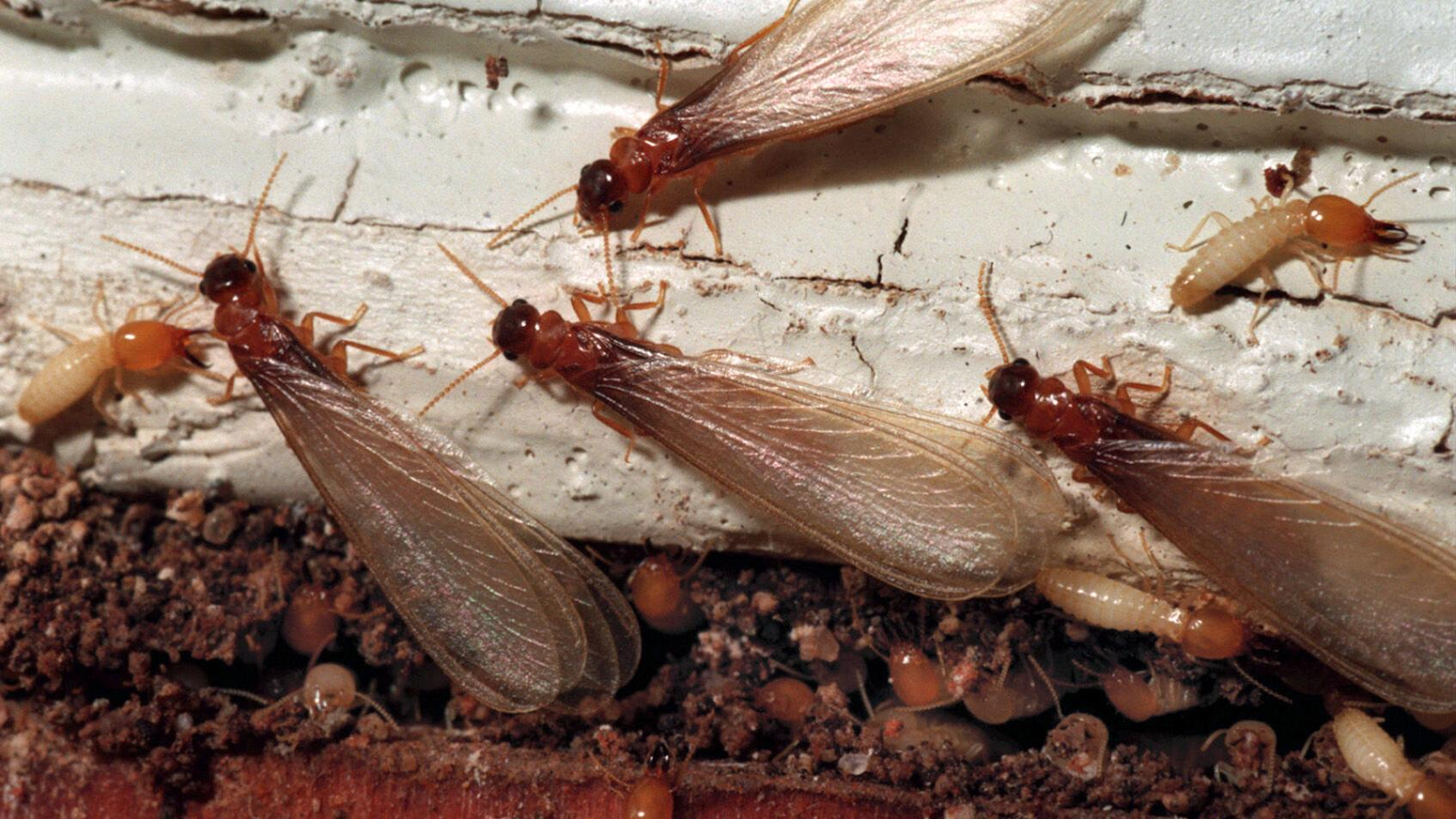
Formosan termites are even more destructive. Originally from Asia, they showed up in the U.S. around the 1950s and have slowly spread to parts of Virginia, including Norfolk. These termites don’t just infest wood—they expand quickly through tunnels, even hitching rides in furniture, potted plants, and railway ties.
- Appearance: Similar to Eastern Subterranean Termites, but far more aggressive.
- Behavior: Rapidly infest wood and expand via underground tunnels. Originally invasive from Asia, now established in parts of Virginia, including Norfolk.
- Habitat: Found in coastal and urban areas, especially in warmer climates.
Termite Infestation Preventive Measures
- Schedule regular inspections done by pros—annually or even quarterly in high-risk areas—to catch termite problems before they get out of hand.
- Eliminate moisture sources by fixing leaks, improving drainage, and using dehumidifiers in damp spots like basements.
- Seal entry points with caulk or weatherstripping to block gaps in foundations, windows, and utility lines.
- Maintain wood-to-soil separation by keeping at least an 18-inch gap and using termite-resistant materials like pressure-treated lumber.
- Store firewood and debris at least 20 feet away from your home and keep it off the ground to avoid attracting termites.
Action Steps if Infestation is Suspected
These steps won’t get rid of termites completely, but they can slow them down until professional treatment takes care of the problem.
- Remove wood debris and mulch from around your home to cut off easy food sources.
- Reduce moisture buildup by fixing leaks and improving drainage, since termites love damp conditions.
- Seal cracks and crevices in your home’s foundation to block more termites from getting in.
Trust Connor’s Pest Pros to Eliminate Your Termite Troubles!
Termites pose a serious threat to Northern Virginia homeowners, causing billions in damage annually across the nation. By recognizing the three key warning signs—mud tubes, damaged wood structures, and swarmers or discarded wings—you can catch an infestation before it devastates your most valuable investment. Remember, early detection is your strongest defense!
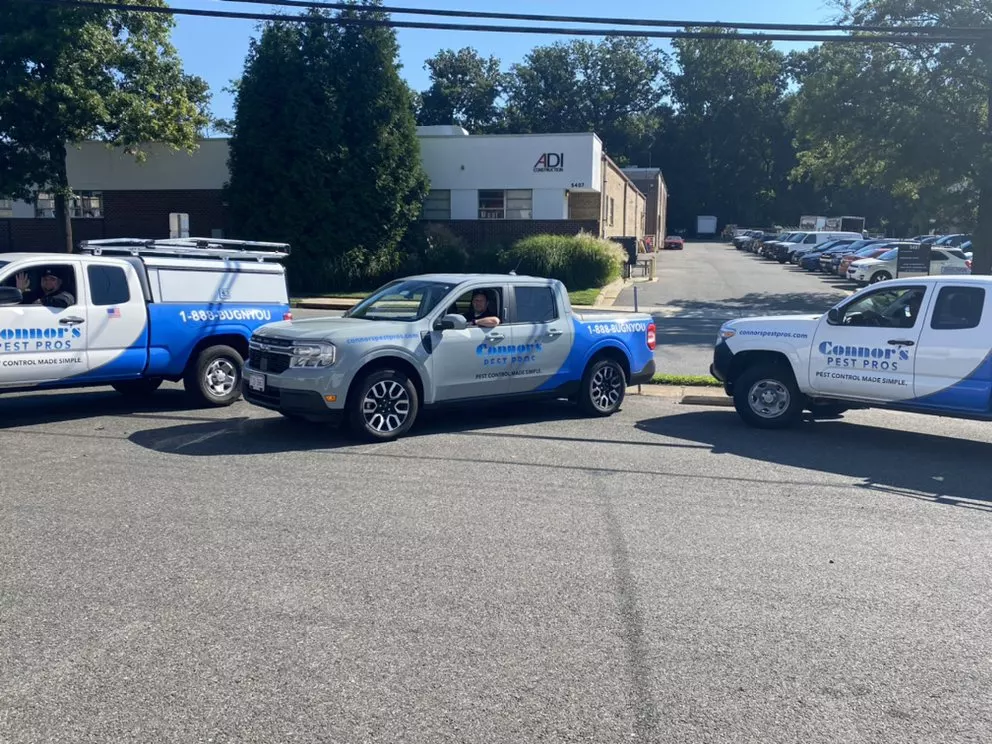
Here’s where we step in. At Connor’s Pest Pros, we’ve turned termite elimination into a science, specifically calibrated for Northern Virginia homes. Think of us as your home’s personal bodyguards against these silent destroyers.
While you’re spotting the warning signs, we’re already preparing the counterattack with our four-step termite treatment process: inspect thoroughly, create a custom treatment plan, implement powerful treatments, and establish a protective shield that keeps your home safe for the long haul.
With 415+ five-star reviews and a 100% satisfaction guarantee,we’re the go-to team for reliable pest, termite, and mosquito control. Our award-winning service and expert technicians make protecting your home easy!
For complete peace of mind, check out Connor’s Total Protection package—starting at just $95/month! This all-in-one plan covers pest, termite, and mosquito control, keeping your home protected year-round.
Ready to reclaim your peace of mind? Call us or request a FREE quote today, and let’s send those wood munchers packing!
Frequently Asked Questions (FAQ)
What are the first signs of a termite infestation?
Catching termites early can save you from costly damage. The biggest warning signs? Mud tubes, weakened or hollow wood, and discarded wings. But there’s another sign people often miss—a soft clicking sound inside the walls. Soldier termites make this noise by tapping their heads against the wood to signal danger to the colony. If you hear it, termites may already be inside.
How can I differentiate between termite and ant swarmers?
Termites and flying ants look alike, but a closer look reveals some big differences. Termites have straight antennae, thick waists, and wings of equal size. Flying ants, on the other hand, have bent antennae, a pinched waist, and wings of different lengths. Spotting these differences can help you figure out what you’re dealing with.
Are there any DIY methods to prevent termite infestation?
A few simple precautions can make your home less inviting to termites. Fix leaks, improve drainage, and keep wood piles away from your home’s foundation. Sealing cracks in walls and around doors can also help block their entry. But while these steps can reduce the risk, a professional inspection is the best way to keep your home termite-free.
How frequently should homes be inspected for termites?
Experts recommend a professional inspection at least once a year. Catching termites early means avoiding expensive repairs down the road.
What makes Connor’s Pest Pros termite treatment different from other services?
At Connor’s Pest Pros, we don’t just treat termites—we eliminate them. Our strategic bait stations target the colony at its source, stopping infestations before they spread. With a four-step approach—inspection, customized treatment, powerful solutions, and long-term protection—we make sure your home stays termite-free for the long haul.

